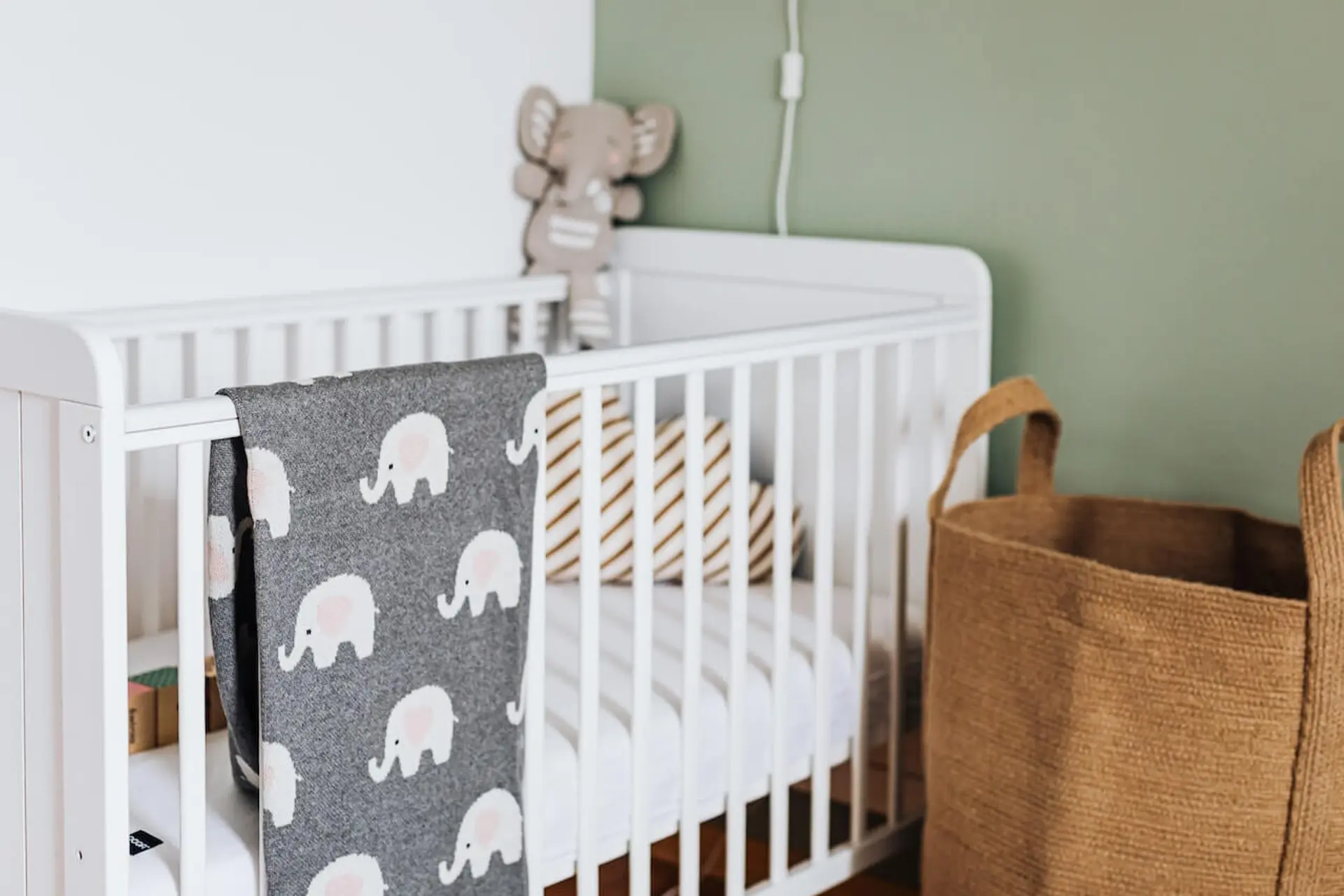Mini cribs are meant to fit in small spaces or provide a portable sleeping option and are smaller than normal cribs.
A small cot is normally about 38 inches long and 24 inches wide, while a conventional cot has dimensions of around 52 inches long and 28 inches wide. Mini cribs are appropriate for limited spaces or as an additional sleeping choice due to their tiny size.
To provide readers with a thorough knowledge of their various sizes, we will examine the measurements of small and regular cribs in this post.
We will compare the heights of mini and standard cribs to highlight their differences. We will also discuss factors to consider when deciding which size best suits your baby and baby’s room bacause it depends on your baby’s age.
Mini Crib Dimensions: How Small Is a Mini Crib?
Mini cribs are a space-saving alternative to full-size cribs, providing a snug sleeping environment for infants in a more condensed footprint. They are smaller in size, typically narrower and shorter than standard cribs.
A standard tiny crib can be 24 inches wide, 38 inches long, and 35 inches high. The smaller dimensions make mini cribs suitable for smaller rooms or apartments with limited space.

Despite their smaller size, mini cribs are designed to meet safety standards and provide a secure sleeping environment for newborns. Mini cribs are often appropriate for newborns up to 1 or 2 years old, depending on their height and weight, so keep that in mind. Your youngster can outgrow the small cot as they age and need a bigger sleeping area.
Adjustable mattress heights are commonly available to accommodate your baby’s growth and ensure their safety. Always abide by the weight and height restrictions specified by the manufacturer for your tiny cot.
Standard Crib Dimensions: What Size Is a Full-Size Crib?
A full-size crib typically measures about 28 inches in width and 52 inches in length. The height of a standard crib varies but is usually between 36 to 42 inches.
These dimensions provide ample infant sleeping space and allow easy movement and growth. A standard crib’s greater size allows for more positioning options and may include extra features like storage drawers or adjustable mattress heights.

When selecting a standard crib, consider the available space in your nursery to ensure a comfortable fit without overcrowding. Cribs that conform to industry standards offer a safe place for infants to sleep and a mattress that can be adjusted as the youngster develops.
Comparing Mini Crib vs. Standard Crib Sizes
Mini cribs and standard cribs differ primarily in their sizes. Mini cribs are compact and suitable for small spaces or families prioritizing portability. They are narrower and shorter, measuring around 24 inches in width and 38 inches in length.
This size allows them to fit into tight spaces or shared bedrooms easily. On the other hand, standard cribs are larger and offer more room for the baby to move and grow.
They provide a roomy sleeping space with measurements of around 28 inches in width and 52 inches in length. Standard cribs are appropriate for use in large, specially designed-nurseries. Consider your specific needs and the available space before making a final decision.
A little cot is better if you have a small room or need a cot that can be relocated quickly. A regular cot is a better choice if space is not an issue and you want one that gives your infant more room.
Which Size Is Best for Your Baby’s Room?
Consider the available space and the room’s design when deciding on the size of your baby’s cot. A micro cot is a sensible option for tiny or shared rooms since it can fit there without compromising on key features. It works effectively in small-floored flats or nurseries.
A conventional cot is perfect if your nursery is roomy or you want it to be the centre of attention. Its generous dimensions provide ample space for your baby to sleep, play, and grow comfortably.
Ensure the crib size allows for easy access and manoeuvrability, considering other furniture, storage units, and movement in the room. Leave enough space around the crib for caregivers to tend to the baby and make adjustments as your child grows.
Other Considerations When Choosing a Mini or Standard Crib
Consider factors beyond size when choosing between a mini crib and a standard crib. Mini cribs have weight and height limitations and may not accommodate your baby for long. Standard cribs offer more longevity. Standard cribs also have a wider range of accessories and bedding options than mini cribs.
A little crib is a great option if portability is a must, as it can be quickly assembled and disassembled. Consider your baby’s comfort, safety, and lifestyle when making a decision.
Conclusion
In conclusion, choosing between a mini crib and a standard crib requires careful consideration of various factors. Understanding the dimensions, comparing sizes, and evaluating other aspects like lifespan, availability of accessories, portability, and safety is crucial in making an informed decision.


